I’ve mentioned before that I’m a complete sucker for stationery and office supplies. Fortunately, my work as a teacher gives me an excuse to indulge my love for high quality supplies. I wrote a blog post awhile ago (that is one of my most popular posts) about how teachers can use the bullet journal system for keeping themselves organized. I’ve tweaked my own system since then, but I still love beautiful supplies. Here’s a rundown of what I currently use.
Note: A lot of the links in this email are Amazon Affiliate links, which means that Amazon gives me a little bonus for anything you order after following one of my links. Clicking one of my links before ordering on Amazon is a great way to support the blog and podcast.
Planners and Notebooks
My Weekly Planner
This was my big indulgent expense this year. I love the planners from Plum Paper. They offer all kinds of customizations, the paper is lovely to write on, the spiral is sturdy and the colors are just beautiful.
Right now they are running a Black Friday special that includes a free notebook with any purchase. They also have a referral program that will give you 10% off if you follow a referral link that I’ll email to you. Just email me at meredith@awaldorfjourney.com if you want me to send you the referral. (They give me a little bit of store credit in exchange.)
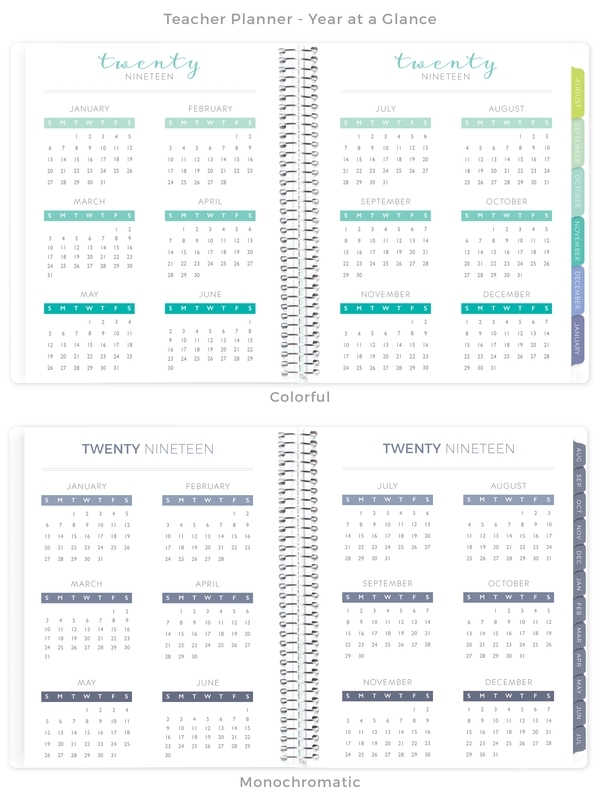
I got the colorful one and chose a first grade cover color and customized the weekly spread pages to reflect my schedule. There are so many adorable cover options.
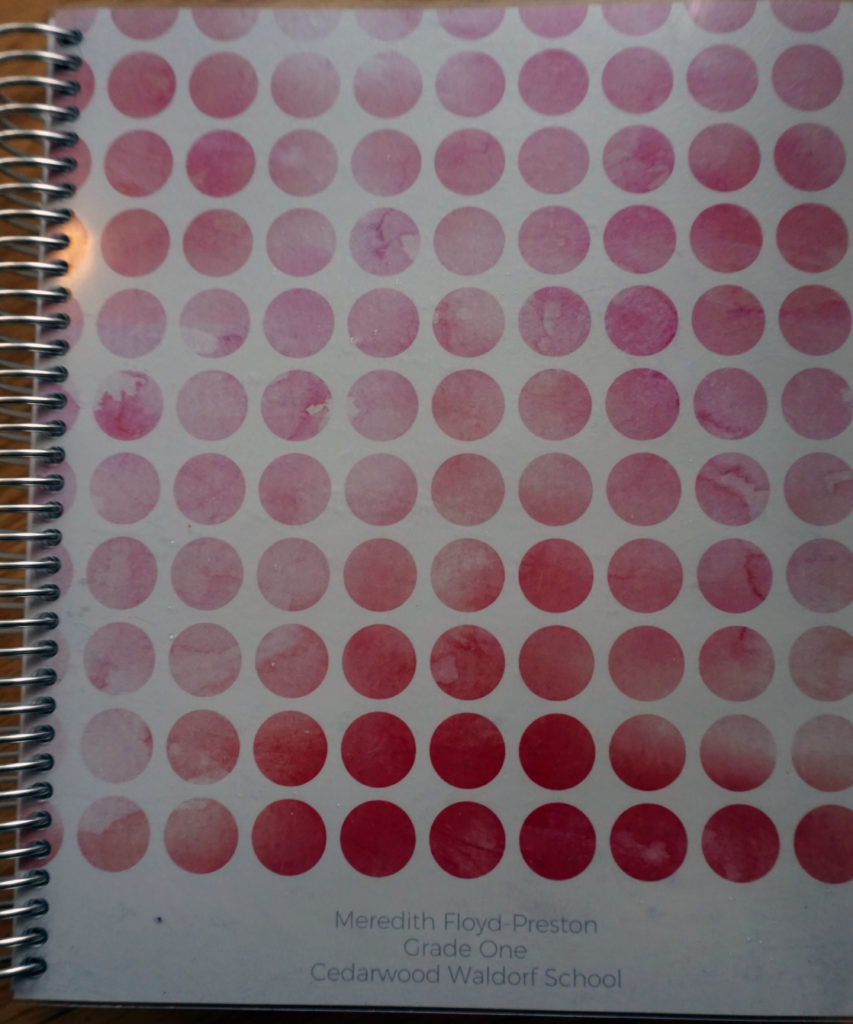
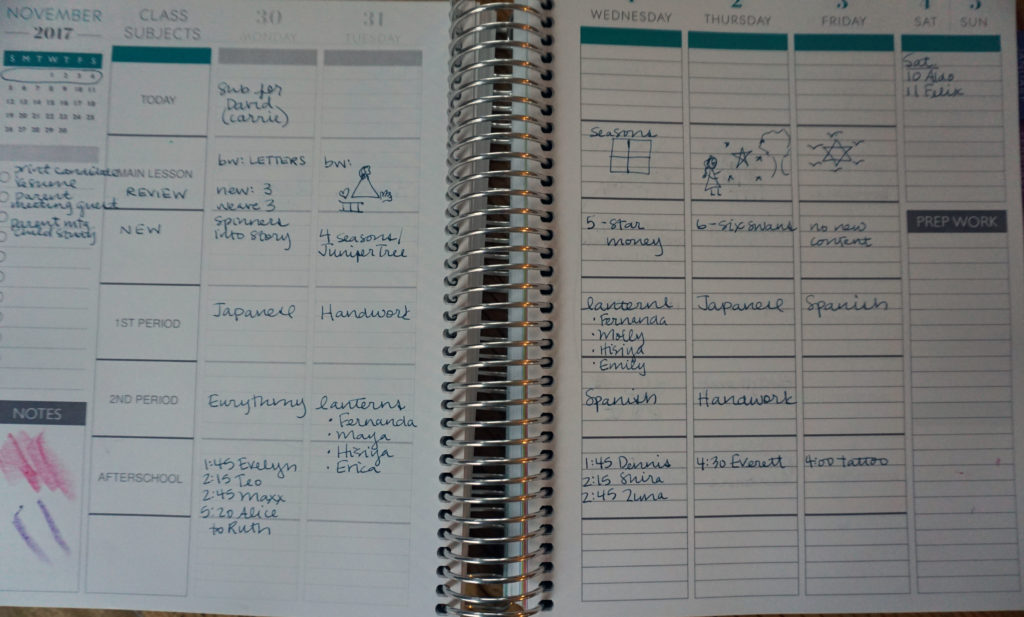
I got to customize the names in the “class subjects” column. This year, because my students’ academic day ends at lunch, I had space for two boxes for main lesson (I generally use one for review and the other for new content), a “today” overview space, as well as two boxes for “afterschool.” Next year I’ll need to consolidate so I’ll still have two spaces for main lesson and then one for each of the five periods that make up the rest of our school day.
There are plenty of pages for parent communications, record-keeping, goal-setting and other things to keep track of like student birthdays and behavior.
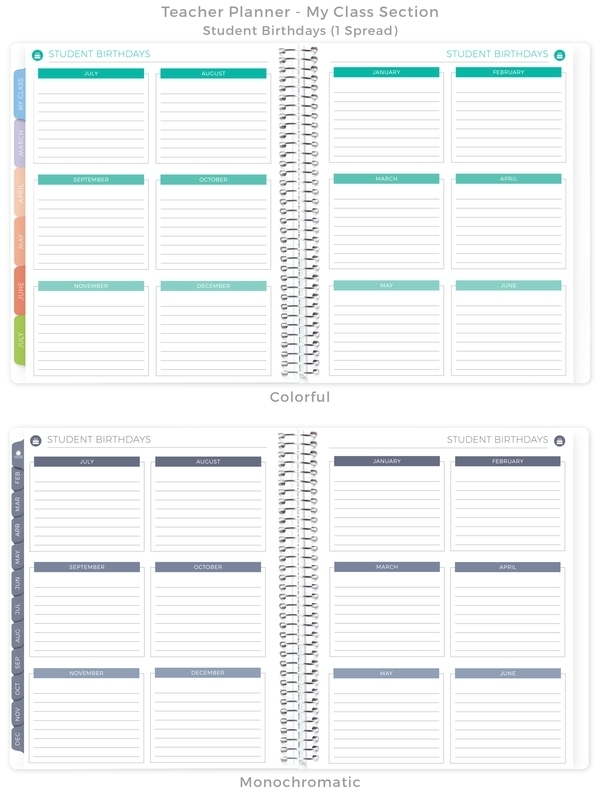
I really like the monthly title page that gives a place to set goals for the month and lay out an overview for the month.
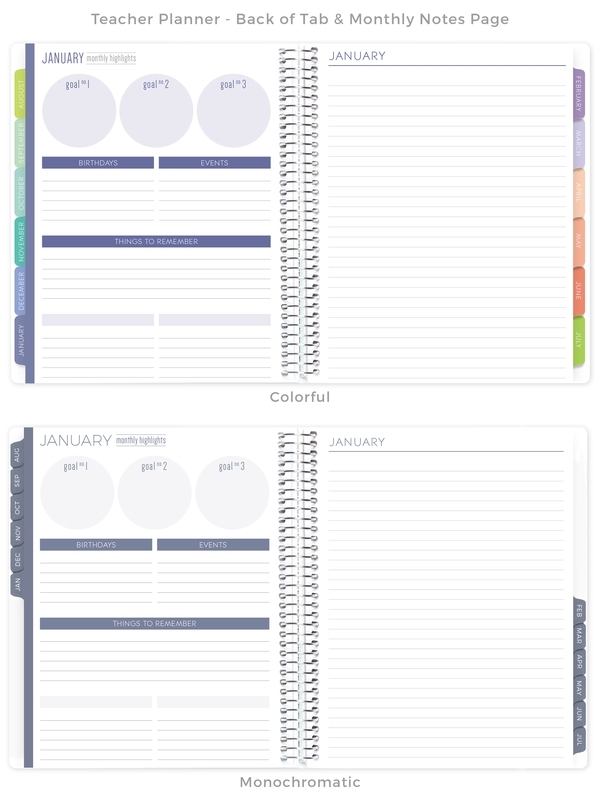
The Plum Paper planner can come in 7×9 (which is what I got) or 8 1/2 x 11 and they have more than just teacher planners. They have a homeschool planner, a student planner, and a regular monthly planner.You can choose to have times indicated, lines, or just leave the spaces blank. There is so much customization possible. Many of the pages look similar in their other planners, so if you like what you see, you can get something similar even if you order a regular family/personal planner.
My one complaint is that it is pretty bulky to carry around, probably because I chose to add some extra record-keeping pages. So, skip the extra pages if you order one. I’m thinking about getting the regular monthly planner for next year, which looks to be much thinner than the teacher book. But I really do like all of the teacher-specific pages, and most of the time the book sits on my desk, so it works out okay.
My Yearly Planner
Semikolon A4 Bound Linen Blank Book

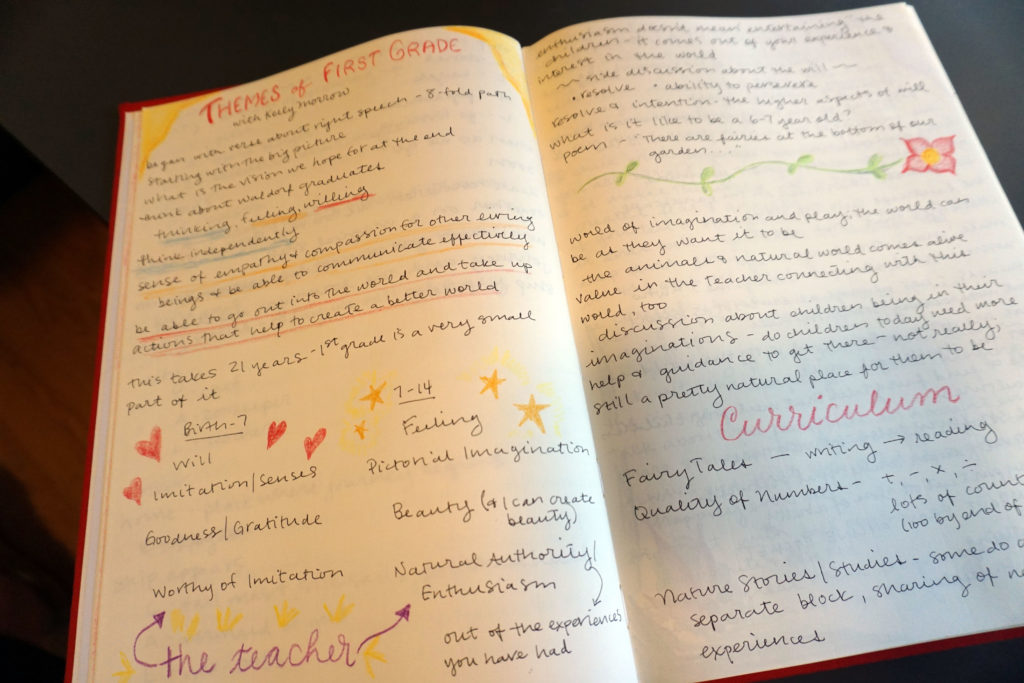
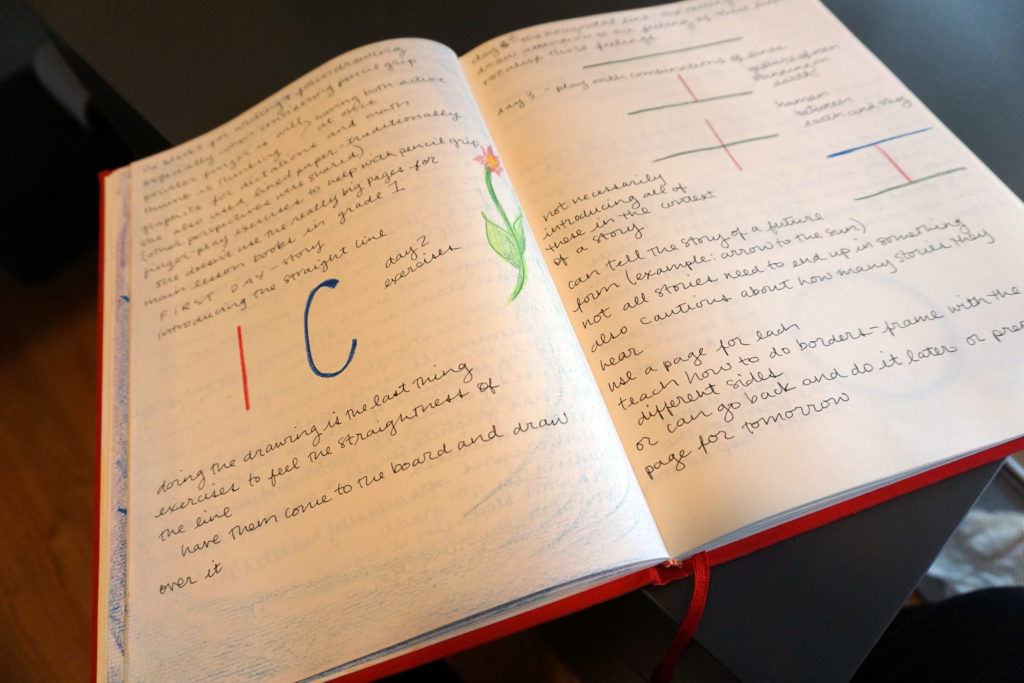
The paper is watermarked with a nice woven, linen-like quality. It’s ideal for colored pencils and crayon, which is why it’s perfect for my yearly planner, but my fountain pen feels a little bit scratchy on the paper, so it’s not my favorite for long writing sessions. It’s fine, just takes a little getting used to.
The best part is that the lovely linen cover comes in so many different colors. I’m imagining having my shelves filled with a full rainbow of these books by the time we get to 8th grade.
Before every block I take this book out and map out the content of the block. It’s not enough space for planning all of the specific content but I always draw out a monthly spread and include the names of the stories that I’ll tell each day. I also include a little description of the main lesson page that we’ll do on that day. I don’t always follow it exactly, things always shift a bit as we go along. But the work I do in this book is a guide for the block and at the beginning of every week I use it to fill in the weekly spread of my Plum Paper planner.
I also use this book for outlining goals for the block, resources I’m using and my seating charts. In fact, many of the planning pictures that I’ve shared on this blog have come from this book.
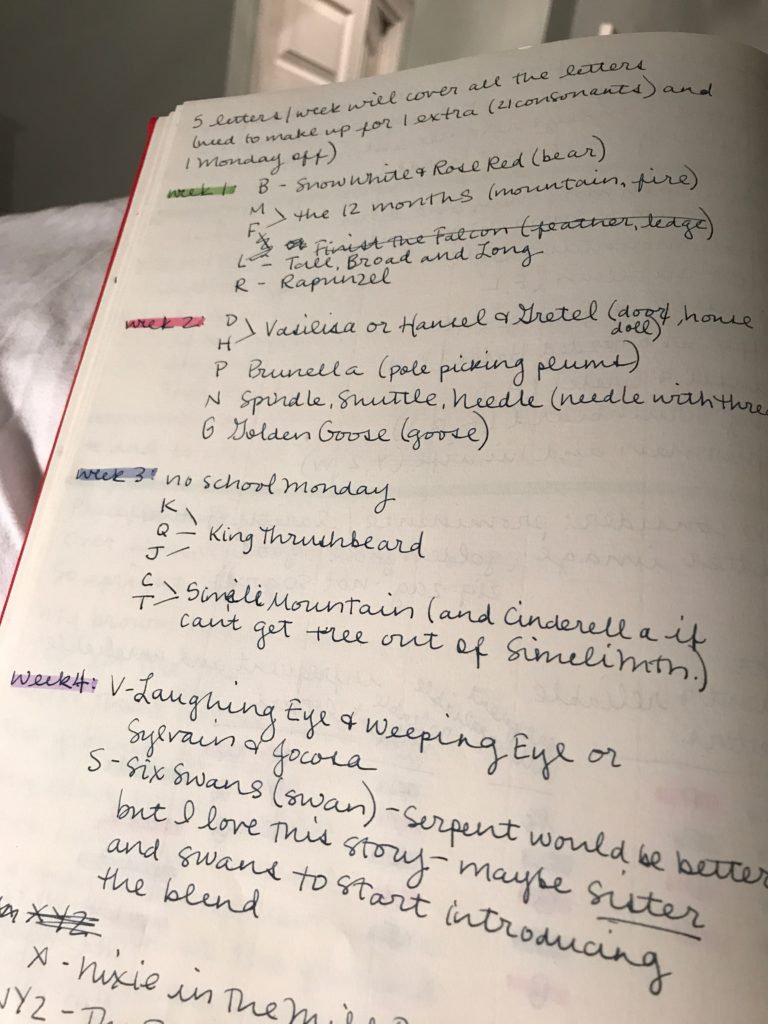
My Daily Planner
Clairefontaine My Essential notebook
This little A5 sized book is what I use for my daily lesson planning. After having experimented with many different methods of preparing my daily lessons (typing on the computer, writing out in a spiral notebook) I’ve settled upon my very favorite.
I have found that I need to write stories out so I’m prepared to tell them in class. It sounds laborious and time-intensive, but even the simplest fairy tale won’t come out right unless I’ve written out my notes ahead of time. Usually I start writing using the exact language I’m going to use when I’m telling the story (“Dear children, once upon a time there was a king . . . “) but by the end I’ve switched to notes and bullet points. There’s something about starting out that way that gets me in the proper mindset to tell the story. And I’ve found that writing by hand is slow enough that my mind can get into the images and it helps me think about the language I’ll use in class.
I also use this book to write out anything I need to remember for the day. Anytime I need to jot anything down, I just grab this book. What makes it all work is that there is an index in the front. I don’t use the index to log my daily lesson plans, but the index is great for logging parent conversations, meeting notes or anything else. This index means I can always just turn to the next blank page whenever I need to write something down and still find it later.
There are a few things that make this book my absolute favorite for writing out my daily lesson plans.
- The paper. Clairefontaine paper is nice and thick and so incredibly smooth. It is absolutely the best thing for writing with a fountain pen. It has a bit of a sheen, so it takes a little while for the ink to dry, but it’s manageable.
- The hand-stitched binding. This binding lays flat without any problem. Even when I first start using the book, or when I’m at the end, it doesn’t flip closed. This is essential for when I’m delivering my lessons in class. I usually put my book on a silk-covered music stand. Of course, I end up not referring to my book very often, but it’s there if I need a reminder of what comes next.
- Pre-numbered pages mean it’s easy to use the index.
I bought a bunch of these books over the summer so they’d be ready to go and I just grab a new one when I finish one off. I’m finding that each book lasts me a couple of months — it’s the end of November and I’m about a third of the way through my second book. When I finish a book I mark the spine with the dates and I love the idea of having a stack of these books on the shelf at the end of the year.
I can’t emphasize enough how much I love this paper. Rhodia and Clairefontaine both use this paper, so there are a few other notebooks that I’ve used and loved with this paper.
Clairefontaine Staple-Bound Notebook
Clairefontaine Life Unplugged Notebook
Clairefontaine Wire-Bound French Ruled Notebook (I love French ruled paper — great for handwriting practice and record-keeping.)
Rhodiarama Web Notebook (I’ve written about this one before. I’ve got a collection of these and just love them. They’re a lot like the My Essential book but hard cover and without the index at the front.)
A lot of these books come in grid, dot-grid, lined and blank. I use lined the most because the paper is so ideal for writing.
Pens and Ink
Writing instruments are another thing that I don’t hesitate to spend a little extra on. Because these supplies are so pleasant to use, I actually look forward to planning my lessons.
After having used other fountain pens (the $10 Pilot Kakuno and $9 Pilot Metropolitan have been previous favorites) I finally decided to splurge a bit and buy myself a TWSBI. I love that the ink fills with a piston mechanism, which is the first step I’ve taken away from using ink cartridges. It is remarkably easy to refill and I love that I can see the amount of ink in the container. I paid a little more, but I found that the Amazon price is now about $30. Totally worth it. I bought the medium nib and it’s just the right size for writing in my daily lesson book.
I loved my Eco so much that I bought myself another TWSBI when I realized that I needed a pen with a finer nib for my personal planner. Fine nib pens can sometimes feel a bit scratchy, but I’m not finding that to be the case with this one. I do love my medium nib Eco a bit more, but they’re both very pleasant writing experiences.
Noodler’s Ink 54th Massachusetts
I really like Noodler’s ink and I own a few different colors but I really love this not-quite-black 54th Massachusetts ink. Noodler’s calls it part of their “bulletproof” line, which means that it is waterproof, but I haven’t experienced it to be waterproof. Maybe I just didn’t allow it to dry enough, but when I went over this ink with a highlighter it smeared.
Diamine Shimmer Fountain Pen Ink
I recently bought some of this ink in the color Citrus Ice and it is so fun to write with. There are little bits of gold and silver suspended in the ink so your writing shimmers in the most beautiful way. The color I bought is a little too light for many uses, but I’m determined to add to my collection.
I really like using highlighters to categorize things in my yearly planning book. I’ll often use different colored highlighters to mark stories that I’m telling during different weeks of the block. I also use highlighters in my daily lesson planning book to draw my eye to particular parts of stories that I want to emphasize — usually the nice, strong images.
As much as I like using highlighters, though, I’ve never liked the colors of the highlighters I’ve found in the office supply stores. I mean, do I really need something so bright yellow to draw my attention? So I was really happy, then, when I found these Zebra Mildliner Highlighters. The colors are so much more pleasant and they’re really quite affordable. I think these 3 sets of 5 pens each runs for about $14. Totally worth it.
Of course, you can also use colored pencils to do the highlighting, but these work so much better, especially on the Clairefontaine paper in my daily planning book.
So, I hope I’ve completely enabled you to go out there and buy yourself some quality supplies to make your teacher planning more enjoyable. Or better yet, add some of these things to your holiday gift list!








Leave a Reply